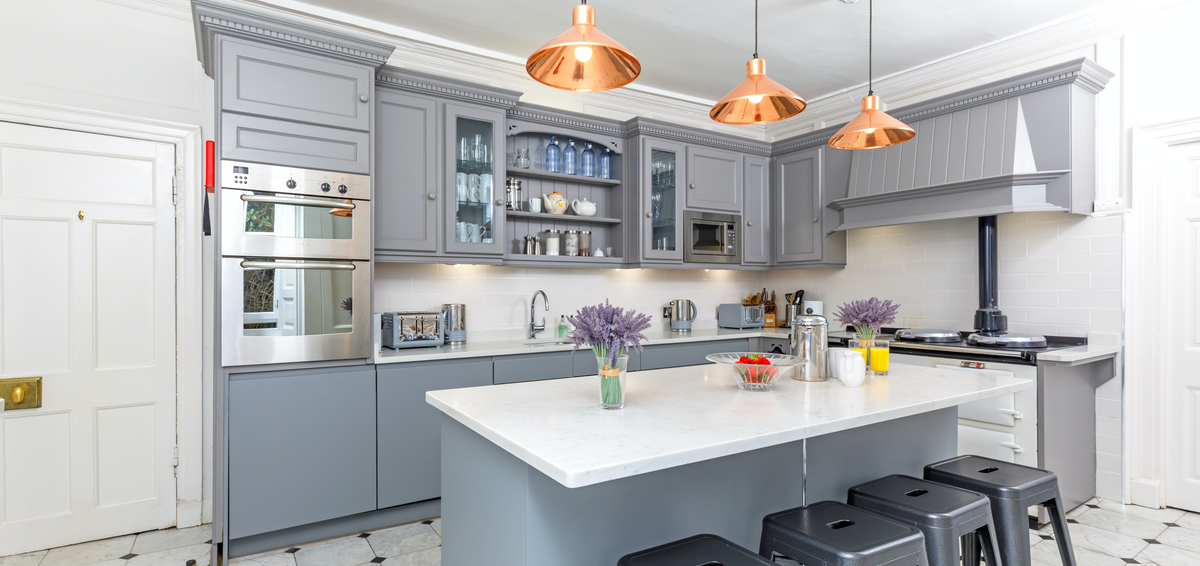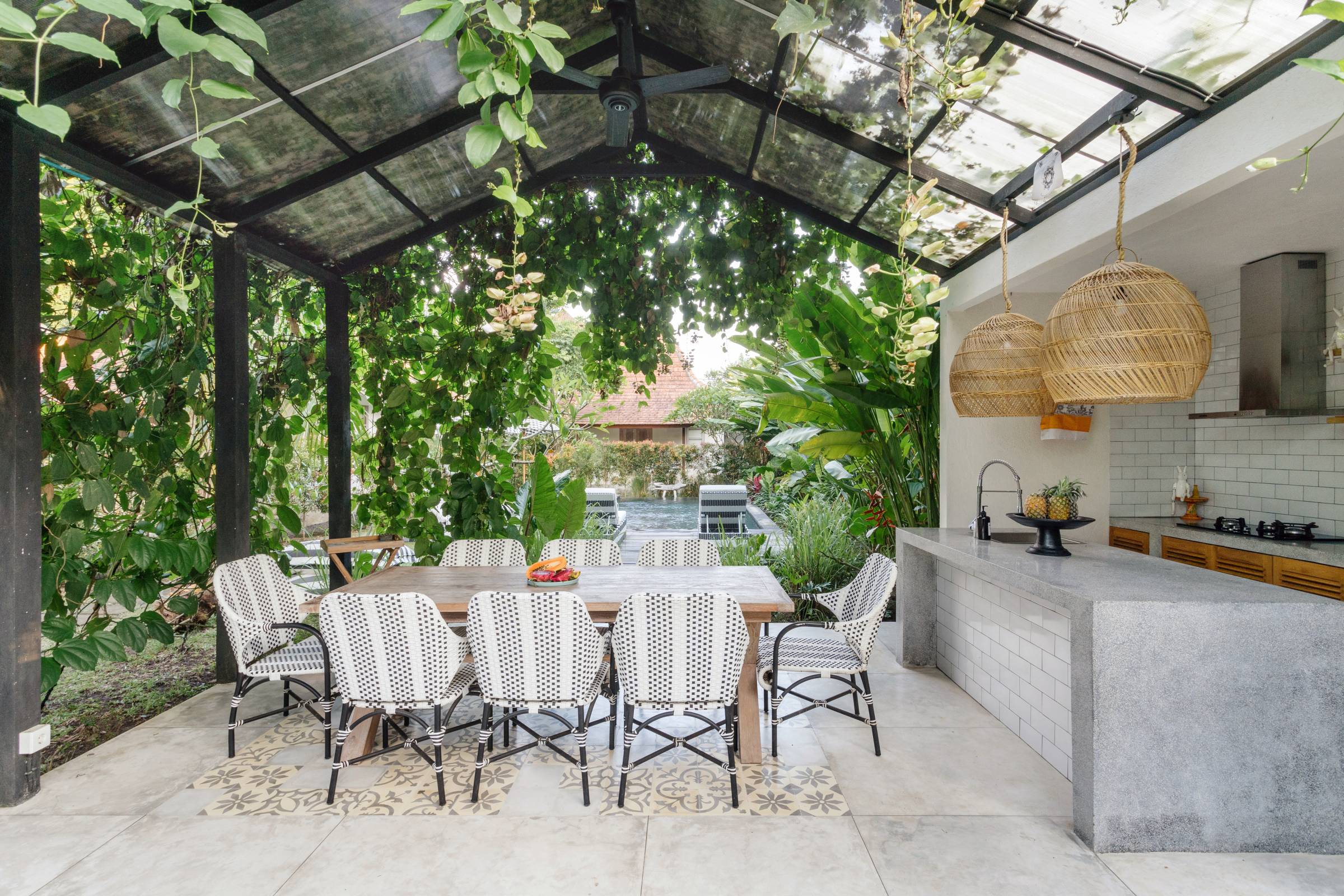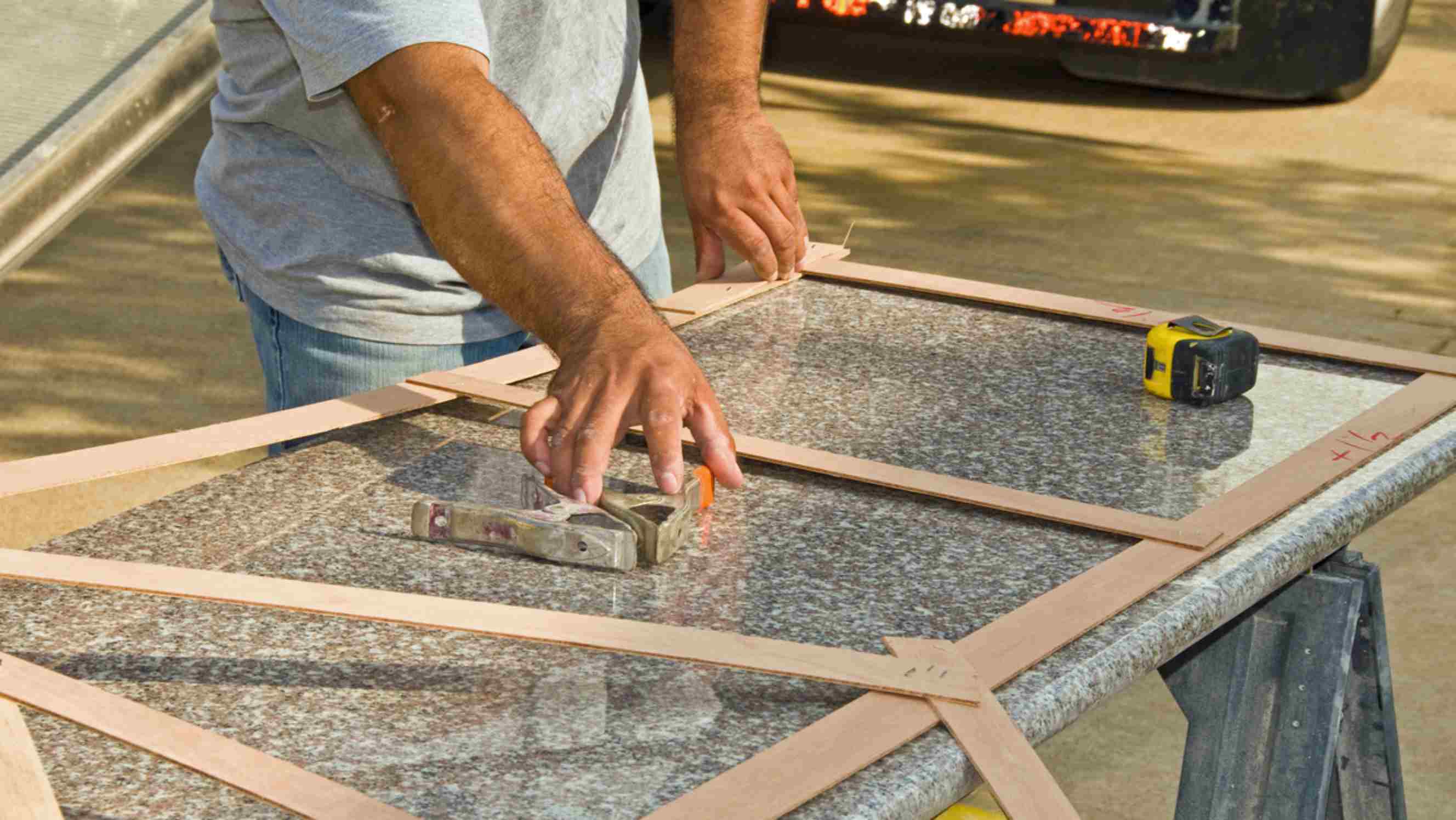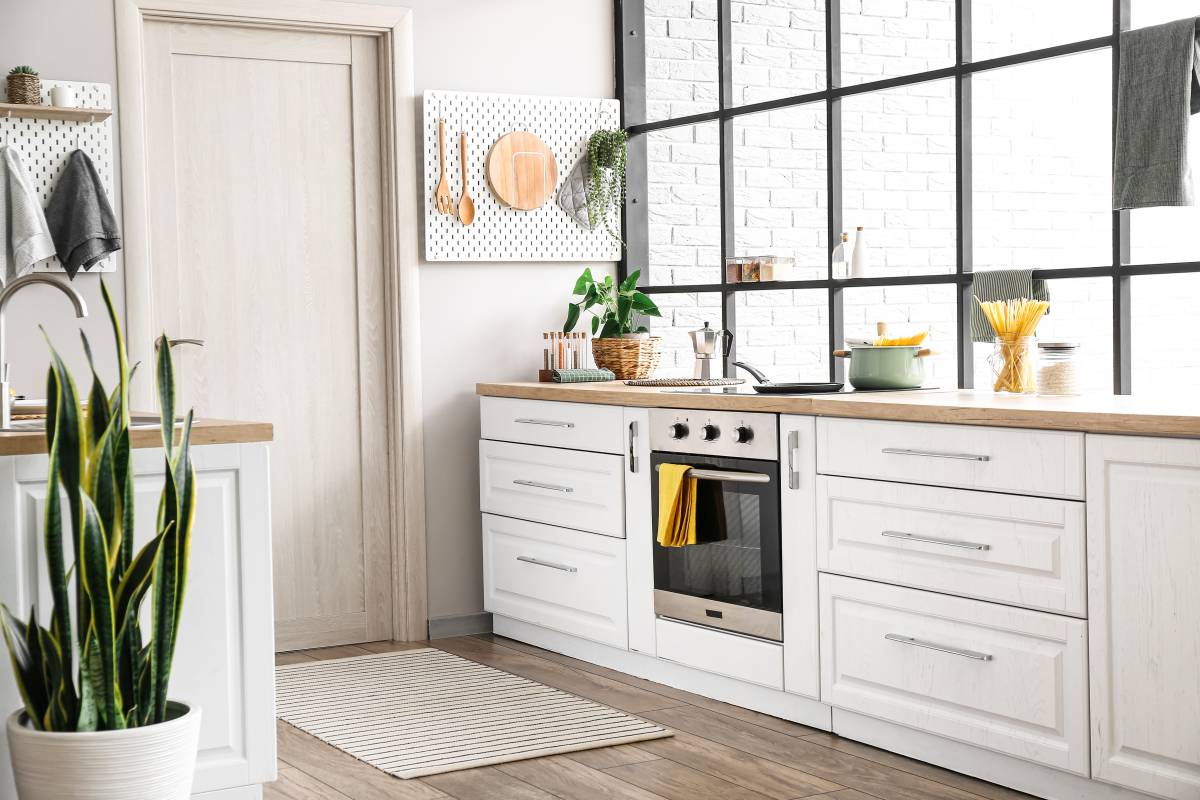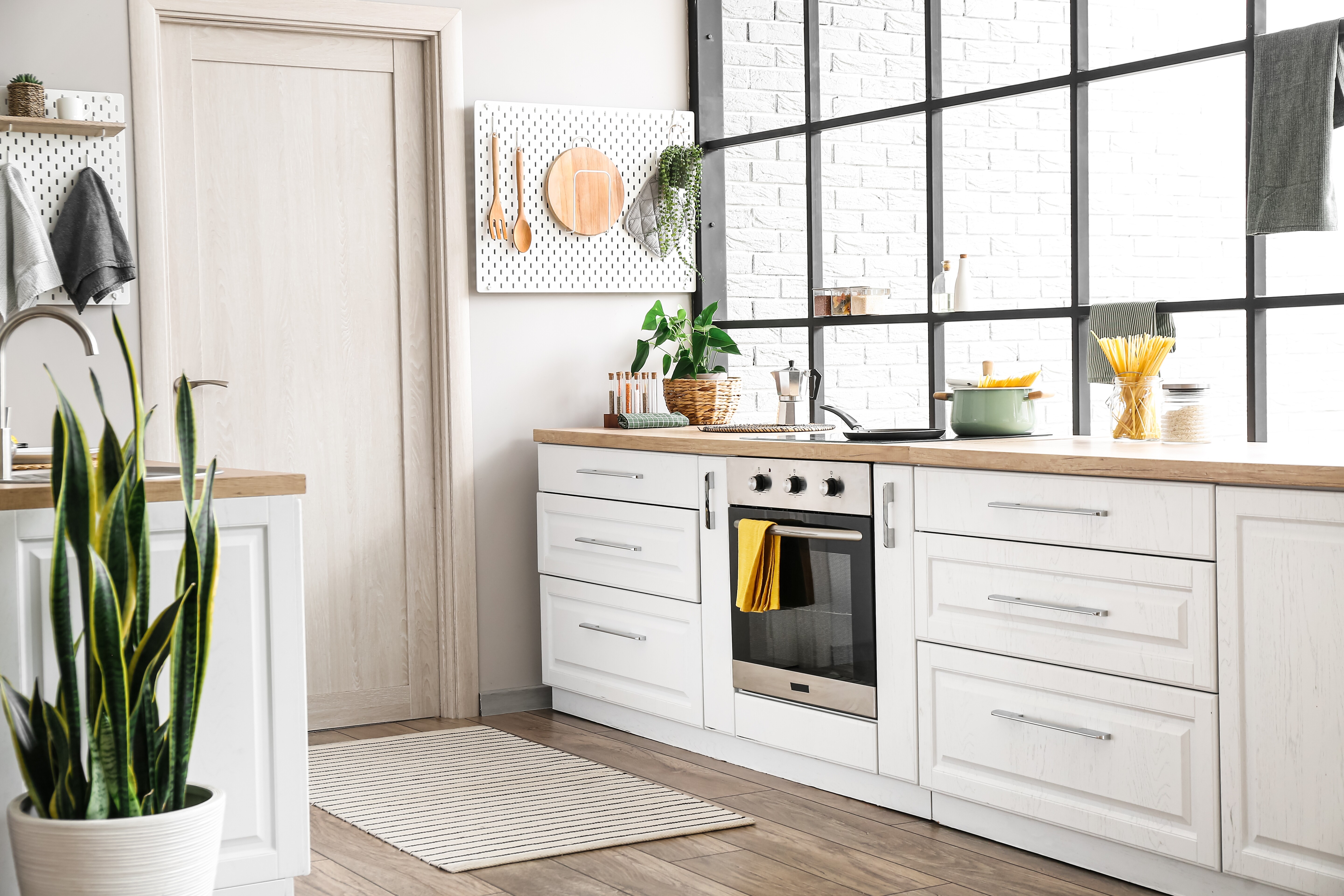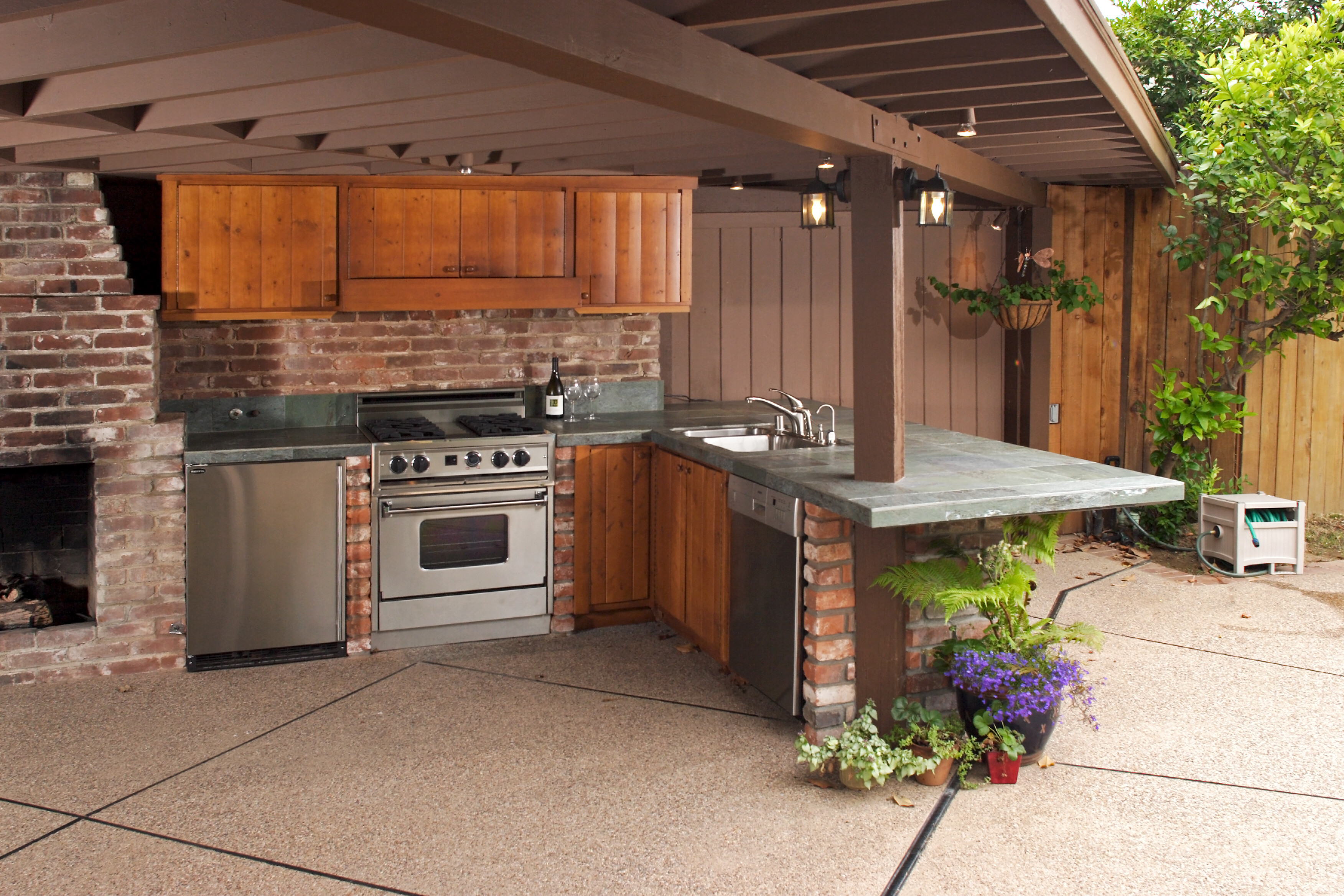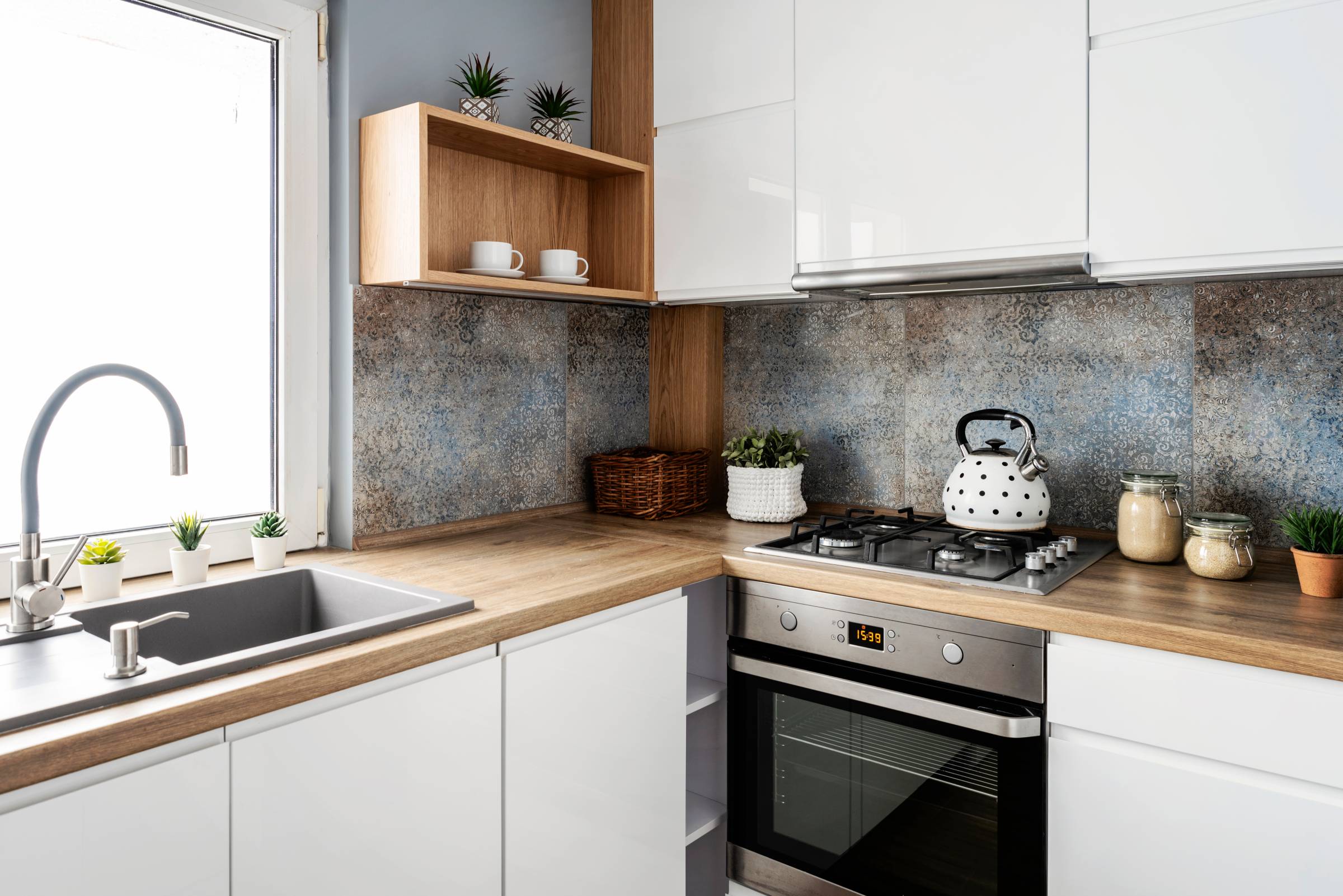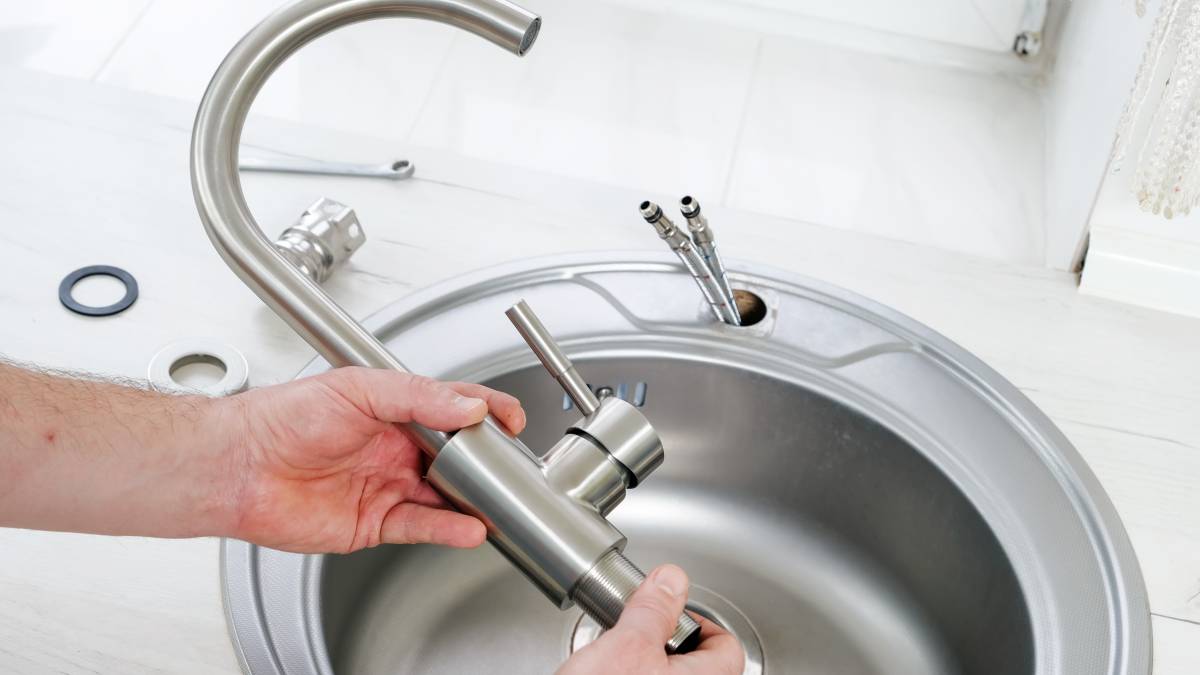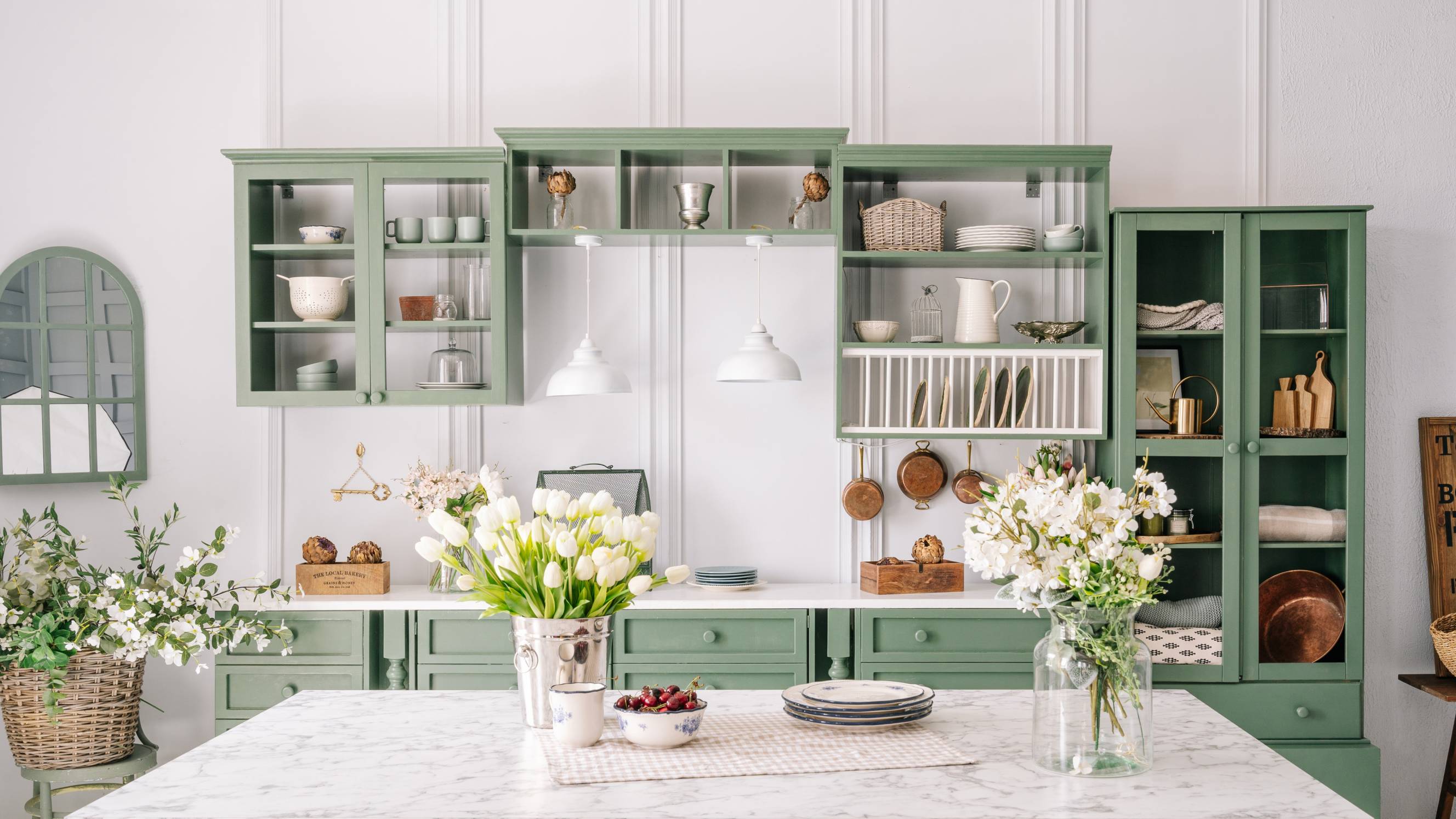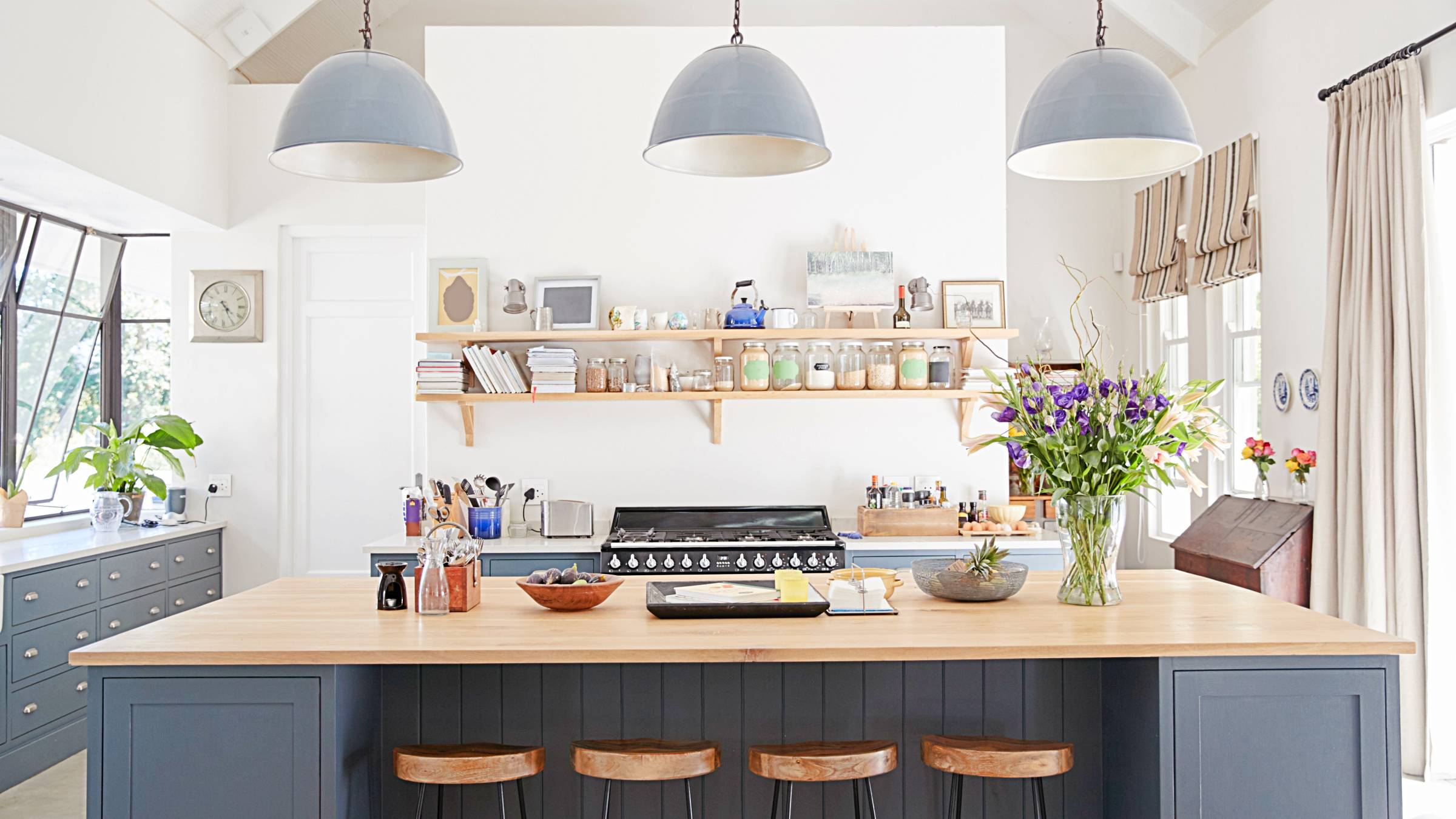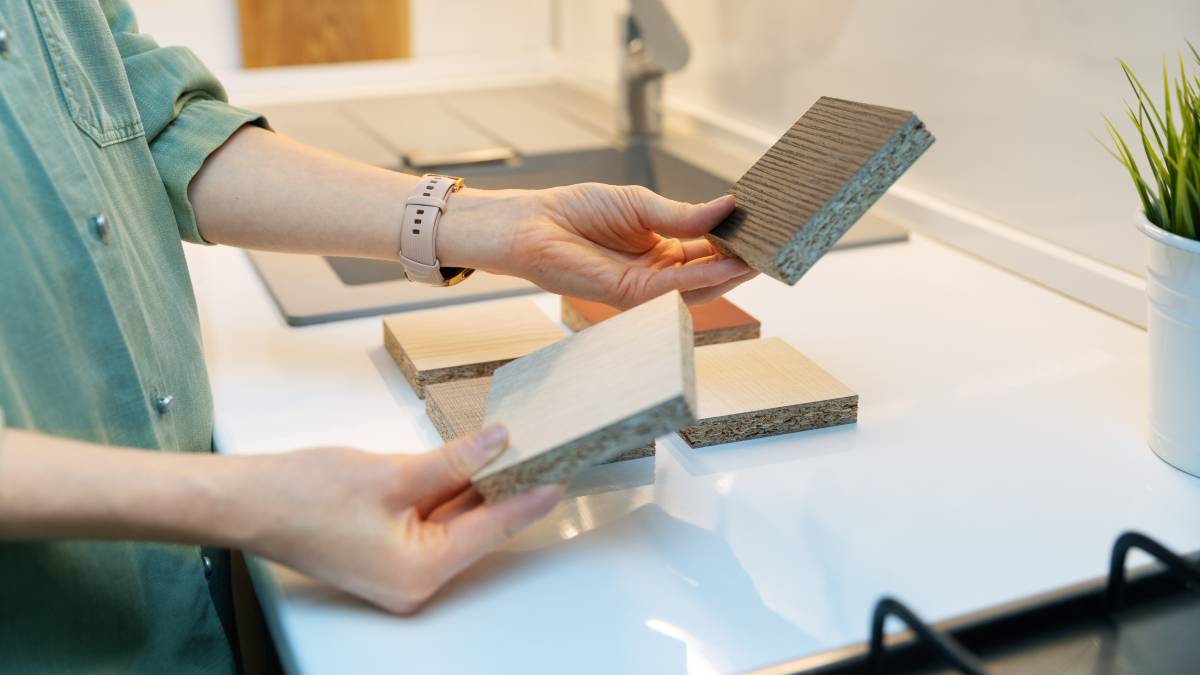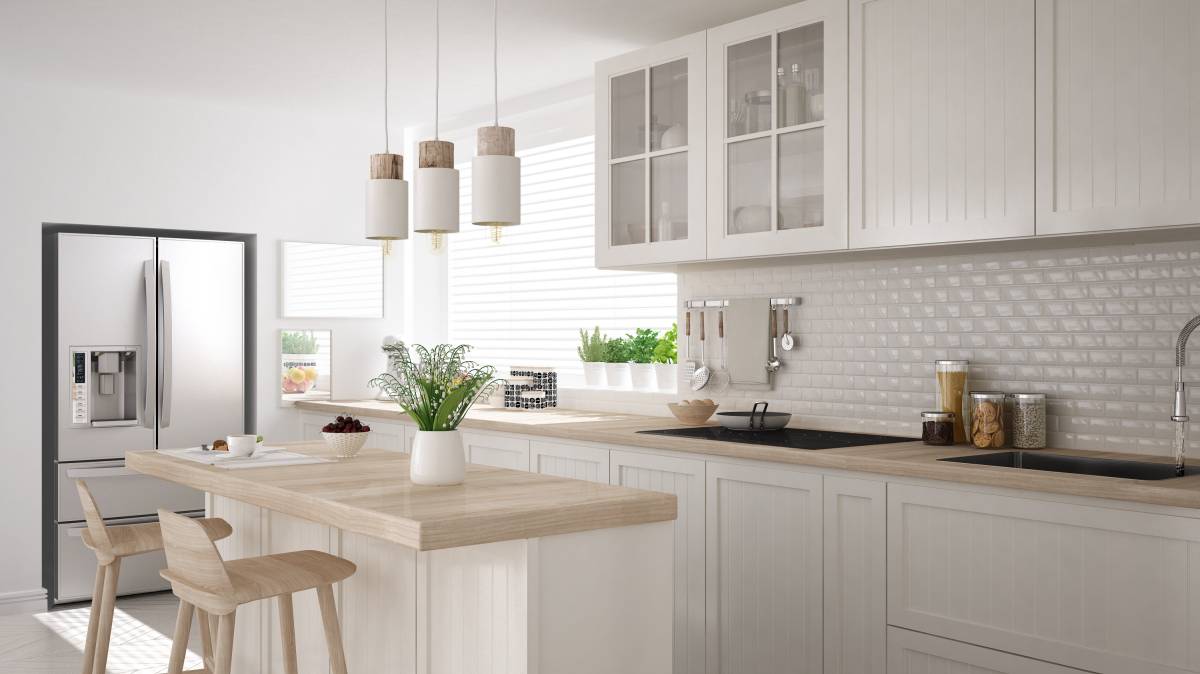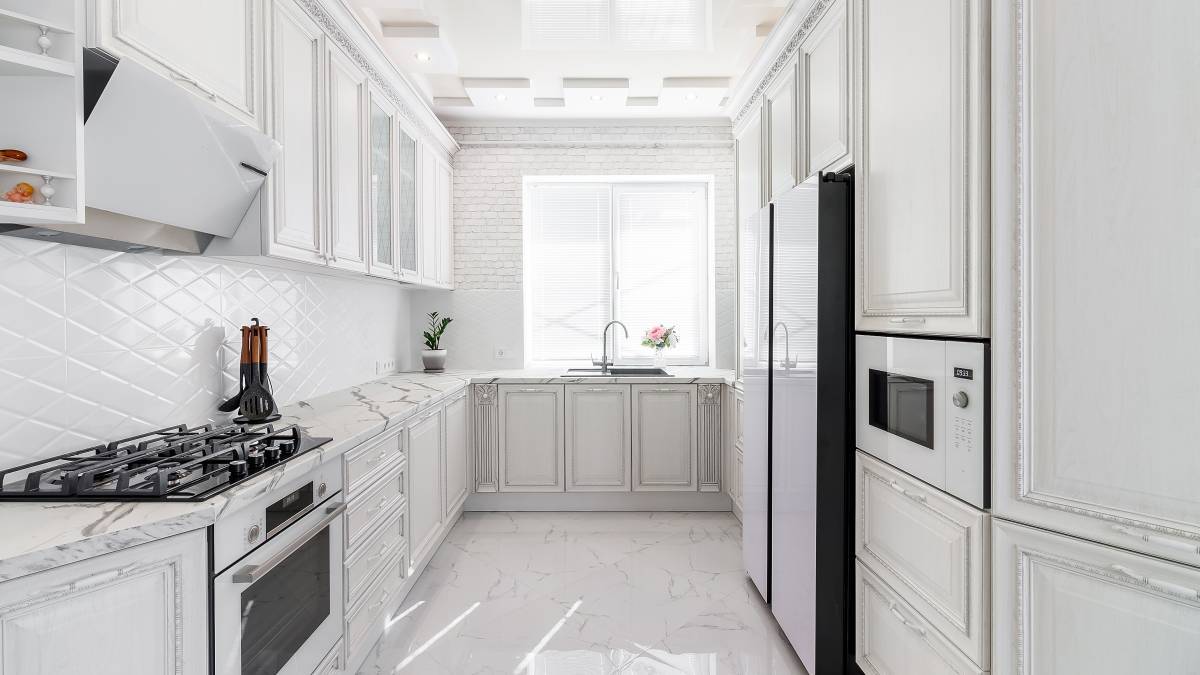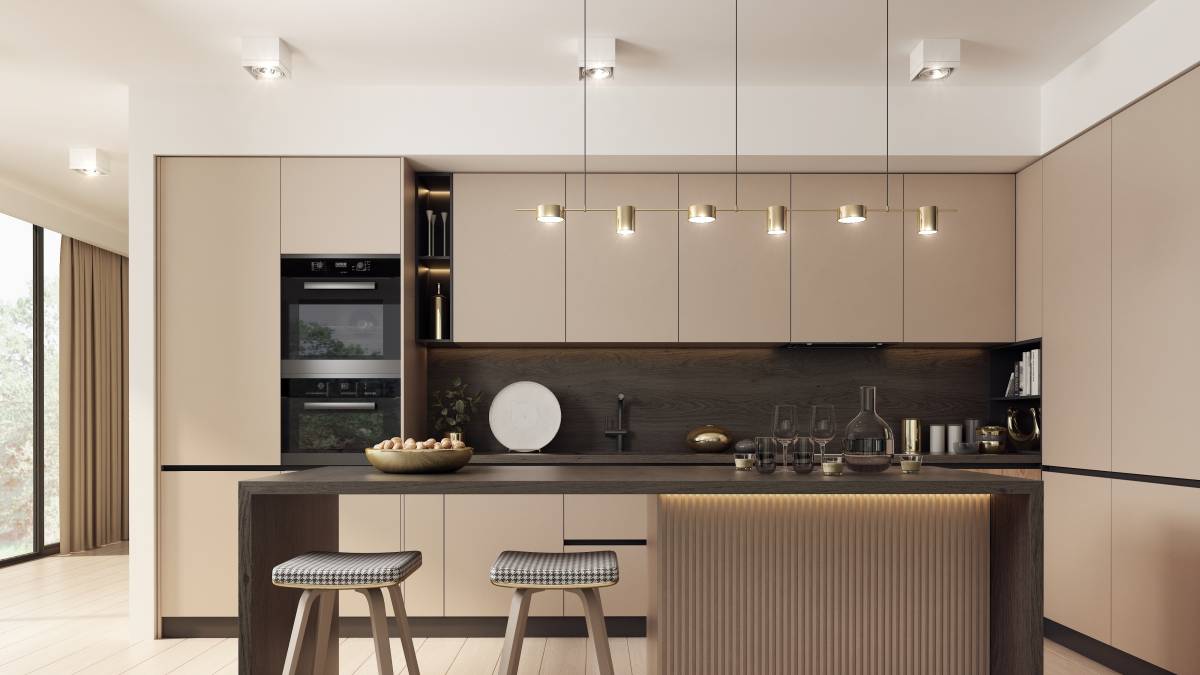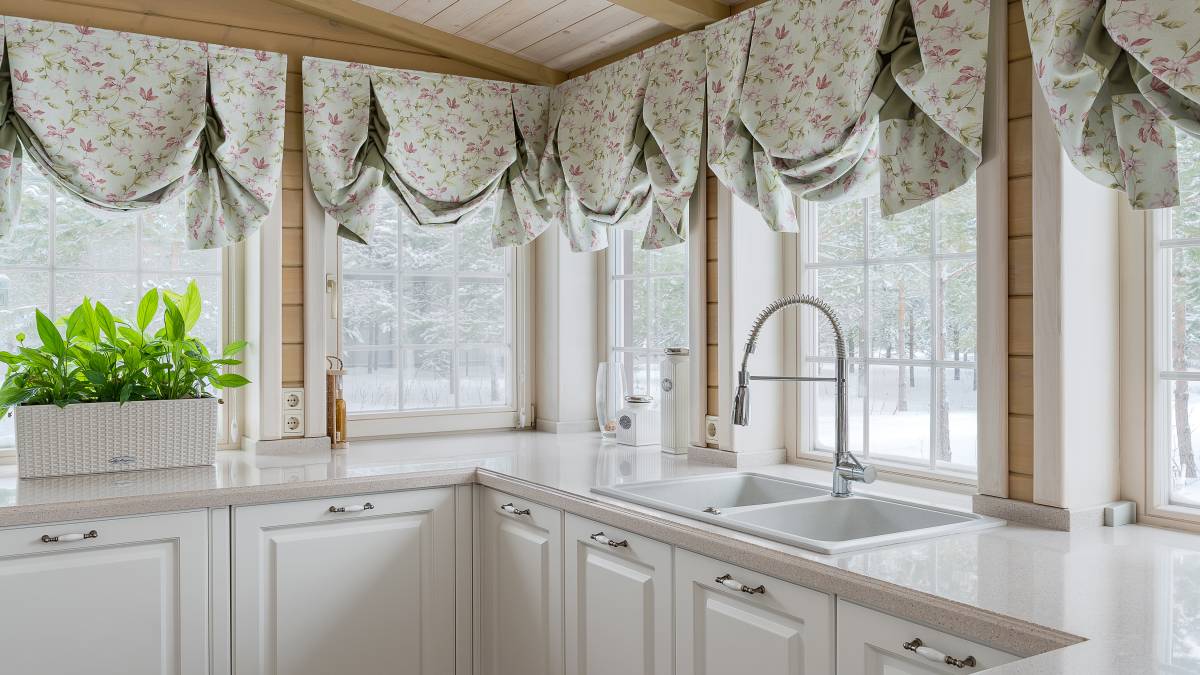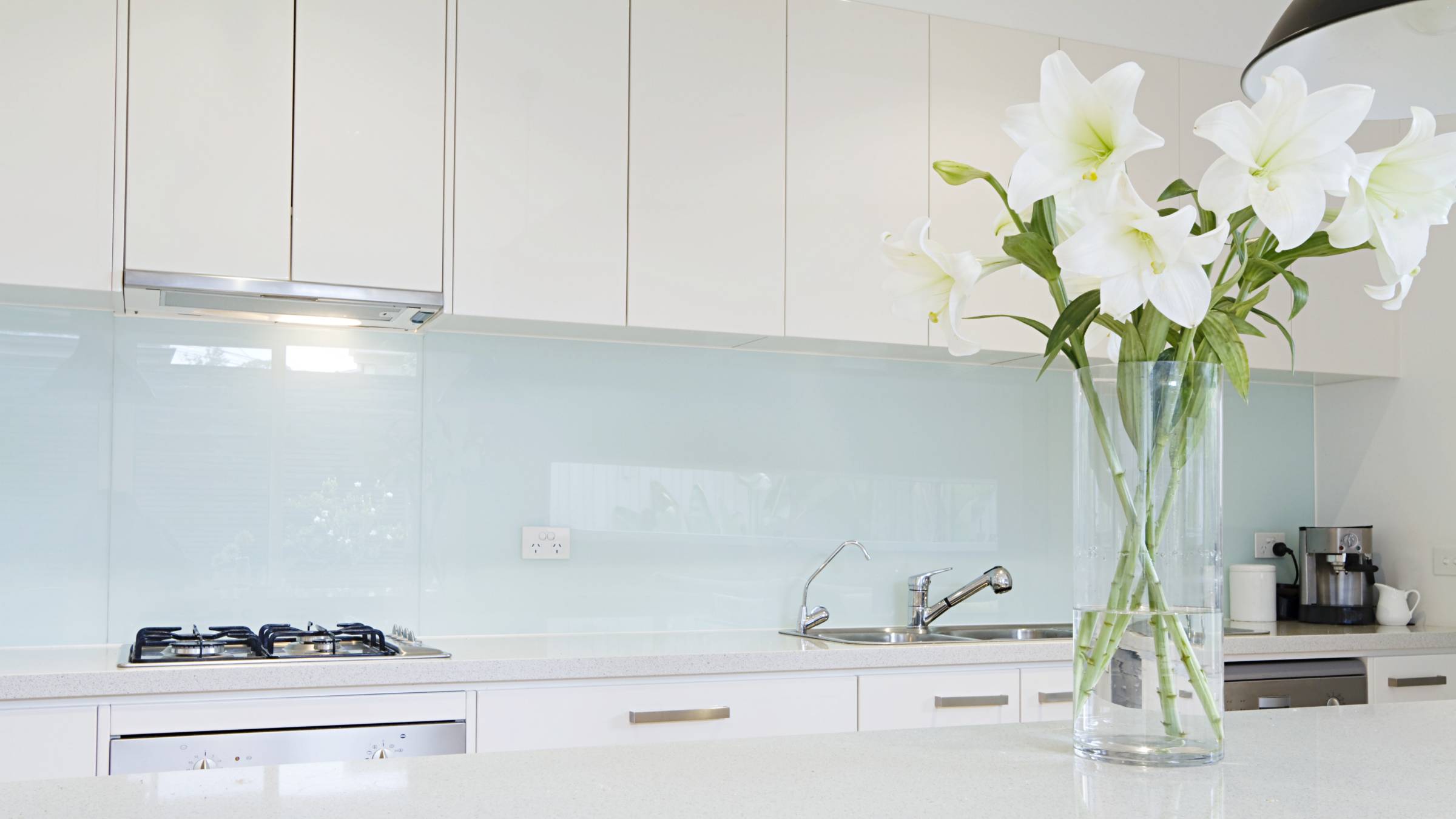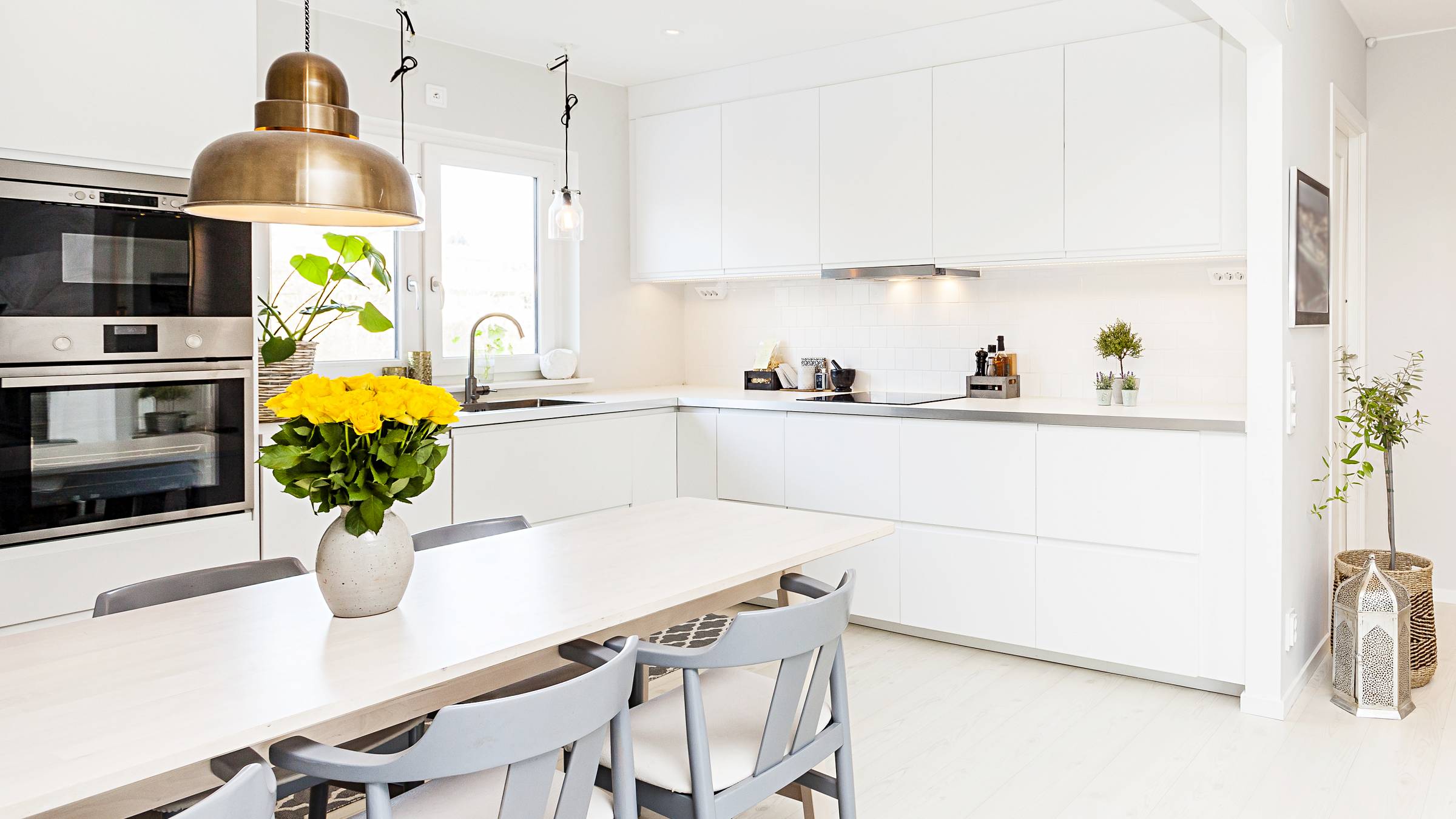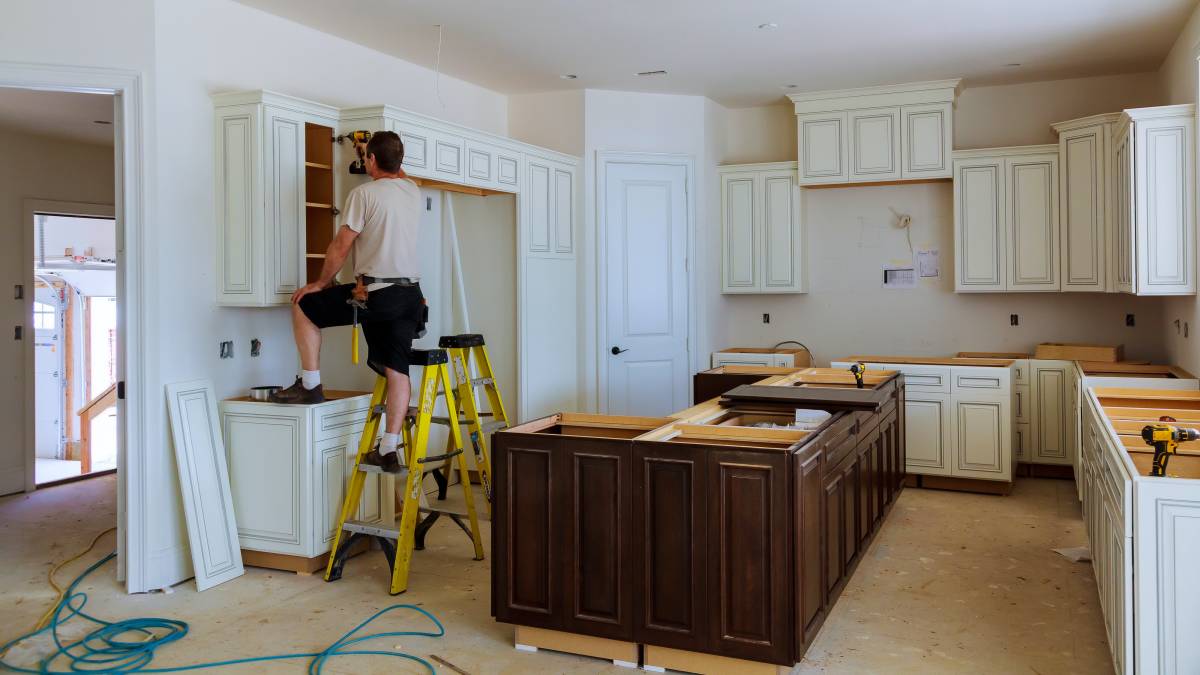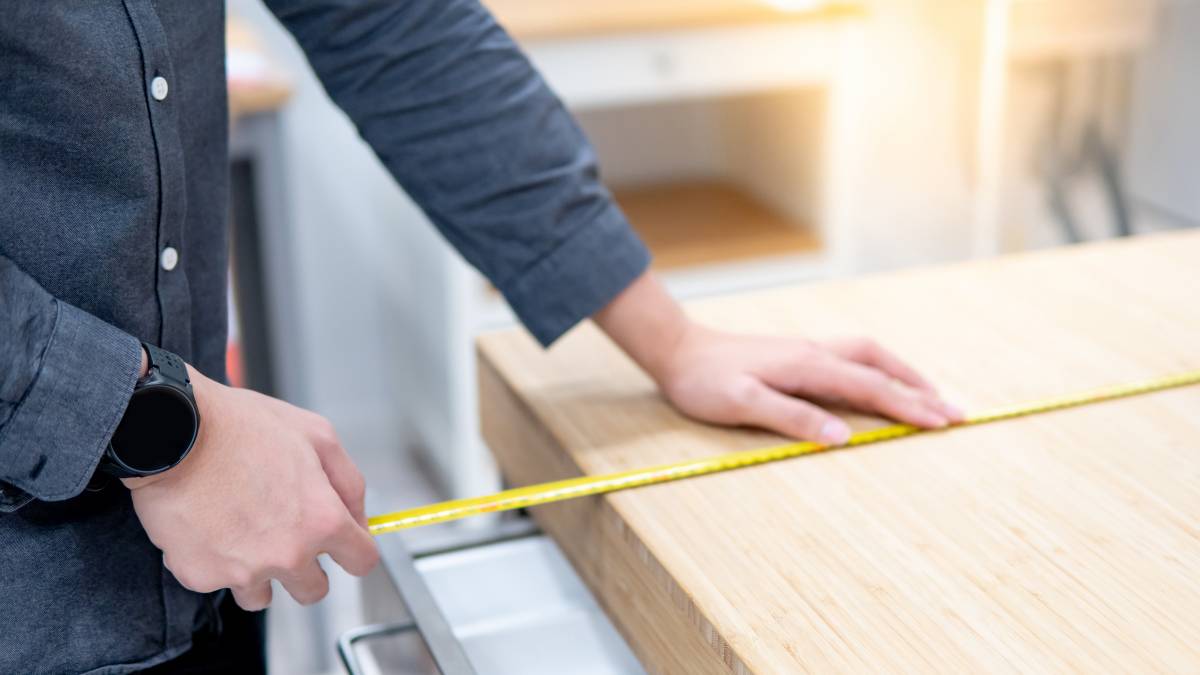- Home/
- Comparisons/
- Kitchen Renovation/
- Butler’s Pantry vs Walk-in Pantry
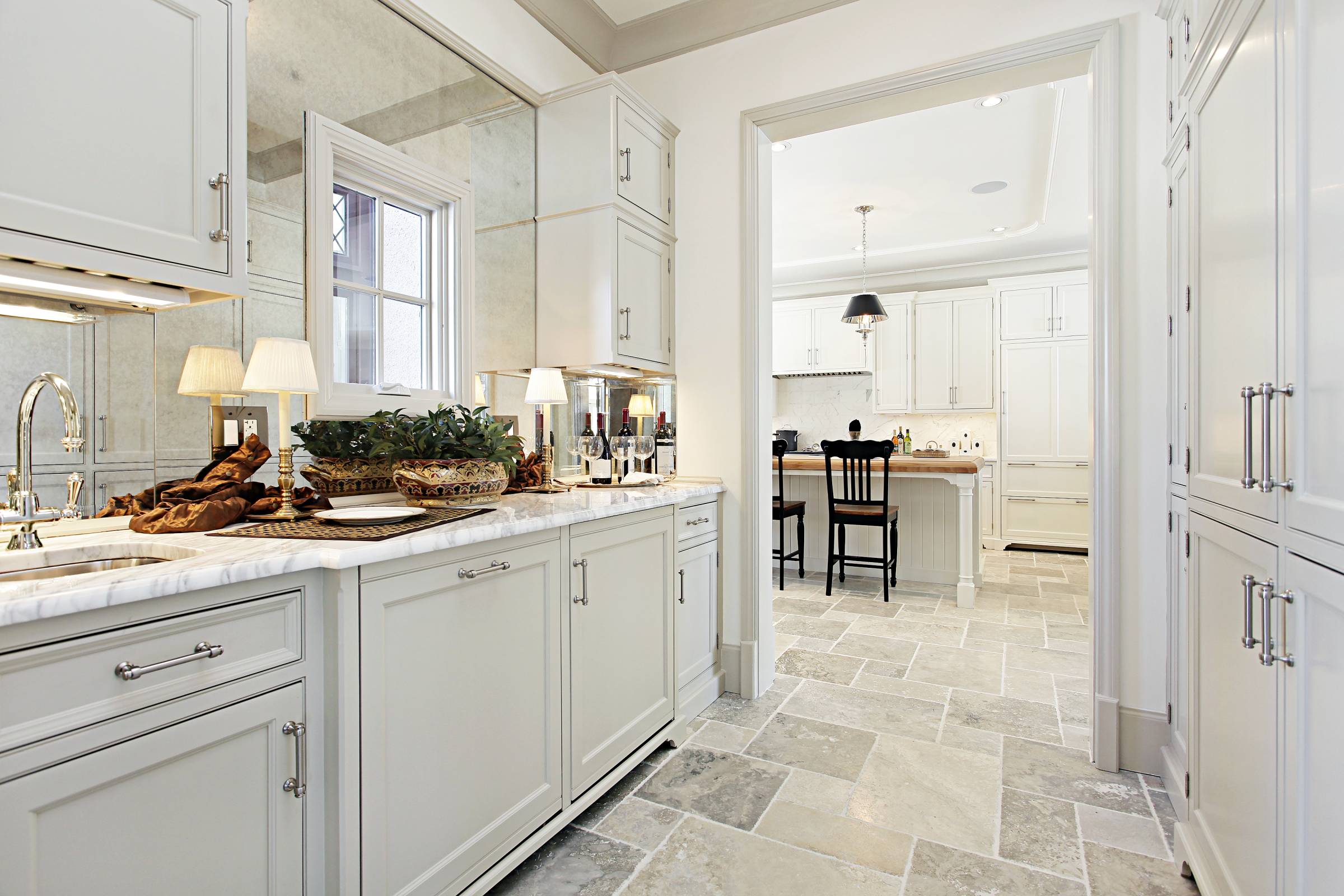
Butler’s pantry vs walk-in pantry: Which is better for your kitchen?
Comparing butler's and walk-in pantries based on cost, appearance, and more
Hire a kitchen renovatorLast Updated on
Key Facts
- A butler’s pantry is an elegant addition to any home, a mini kitchen with a dedicated space for food staging and discreet storage.
- A walk-in pantry is a spacious and versatile storage solution that enables you to efficiently organise and store a range of pantry items, groceries, and household essentials.
Renovating your kitchen is an exciting journey of reimagining and revitalising the heart of your home. A vital aspect of any kitchen renovation is your pantry design. Your pantry will serve as your primary storage for all your culinary essentials and provide convenience, organisation, and easy access to ingredients and supplies.
That said, you might have to consider a butler’s pantry vs a walk-in pantry. Each option offers unique advantages and caters to specific needs. To make an informed decision, it is essential to understand the key characteristics and benefits of these pantry styles based on your lifestyle and kitchen aspirations. Let’s explore the differences between a walk-in pantry and a butler’s pantry.
What is a butler’s pantry?
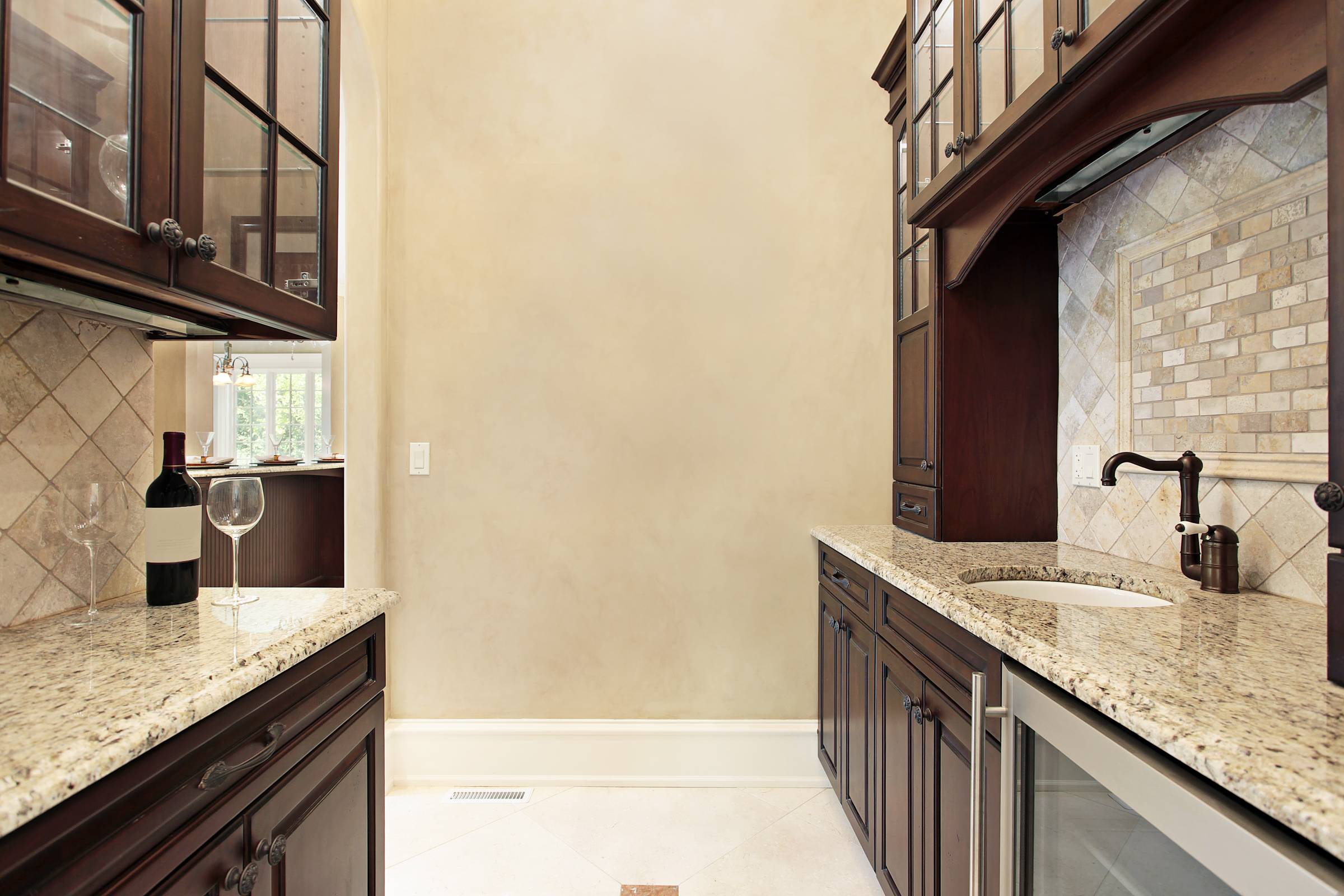
A butler’s pantry is commonly called a “butler’s kitchen” or “scullery.” It was historically used by the household help and butlers, hence the name, to prepare meals and such. Until today, it’s a separate room or an extension of the central kitchen, typically located adjacent to the dining area or kitchen. Think of it as a mini kitchen with its own sink, small appliances, and a kitchen counter space.
A butler’s pantry can offer extra space for storage, food preparation, and cleaning and washing up away from the main kitchen. It’s a great spot for keeping all your crockery, cutlery, and other essential items close at hand. The beauty of having a butler’s kitchen is that it helps keep your main kitchen neat while providing a handy space for all your culinary needs.
What is a walk-in pantry?
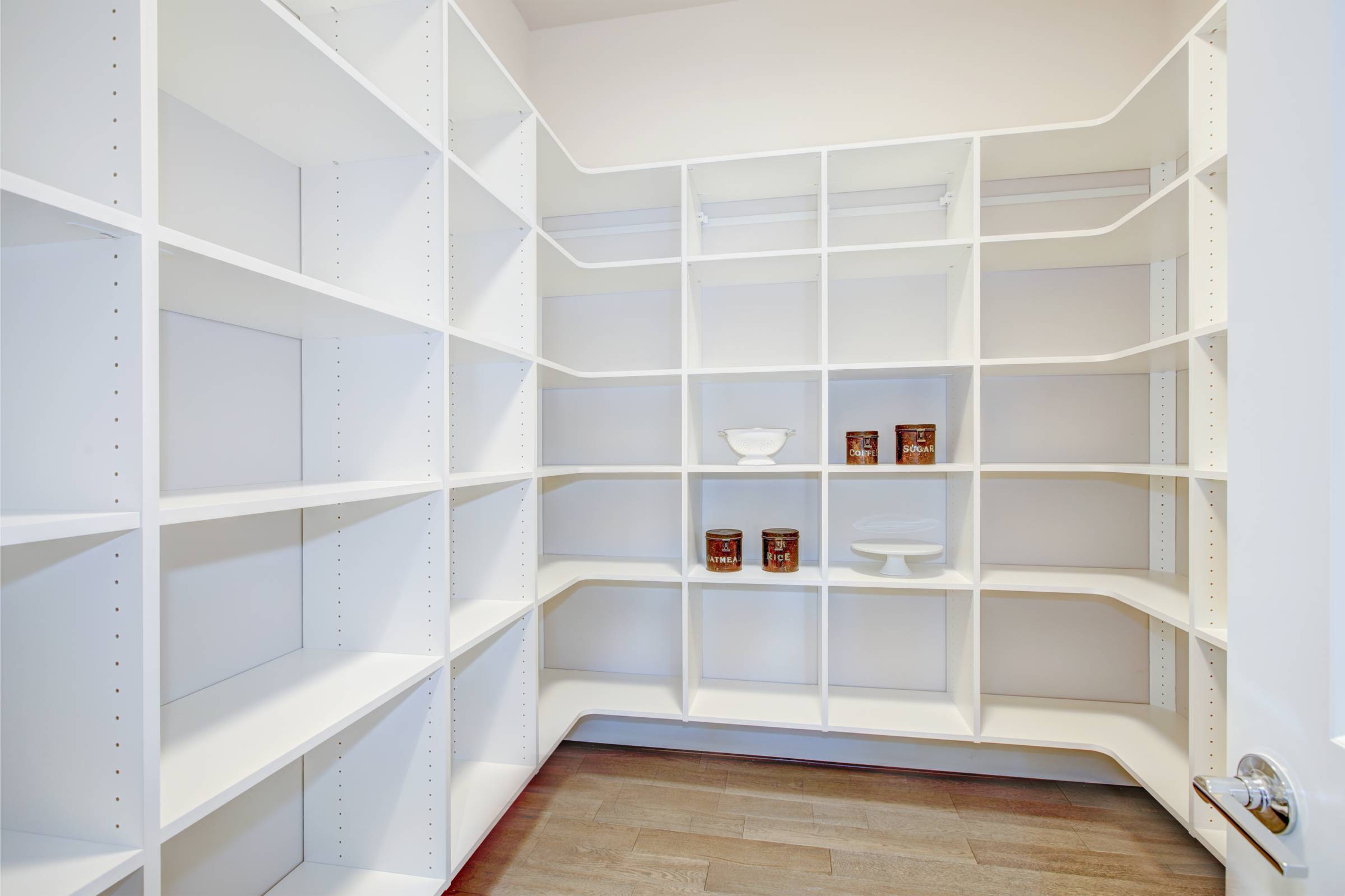
A walk-in pantry is commonly called a “pantry cupboard” or simply a “pantry.” It is a separate storage space, typically located adjacent to the kitchen, specifically designed to store food items, kitchen supplies, and other household essentials. As the name suggests, a walk-in pantry has a larger space that allows you to walk into it. It provides ample room for organising and keeping a wide range of items.
It’s often equipped with shelves, cabinets, drawers, and sometimes an additional counter space, making it easier to keep your pantry items neatly arranged and easily accessible. This dedicated storage area helps keep the kitchen area clutter-free and allows for efficient meal preparation and grocery organisation.
Butler’s vs walk-in pantry: Which is better for your needs?
When you’re planning to renovate your kitchen and pantry, you’ll need to decide between a butler’s pantry vs a walk-in pantry. This will ultimately depend on your budget, space, personal preferences, and specific needs. Let’s explore the characteristics of each:
In terms of cost
The costs of building a pantry for kitchen renovations depend on several factors, such as design complexity, material quality, and location. Additionally, labour costs can vary in Australian regions. It’s always a good idea to obtain multiple quotes from builders or contractors in your area to get a more accurate estimate.
As a general estimate, you can build basic walk-in or butler’s pantries that cost between $1,000 to $1,400 on the lower end of the market. If you have the budget and prefer customisation, more space, and better shelving, installation costs can go much higher. A beautiful butler’s pantry could cost you between $5,000 to $10,000 or more. Meanwhile, installing a walk-in pantry can range from $2,000 to $10,000.
In terms of appearance
A butler’s pantry is typically designed to integrate with the kitchen and dining room seamlessly. It is often located adjacent to or near the kitchen space. The materials, finishes, and cabinetry in a butler’s pantry are usually chosen to match or complement the kitchen’s overall aesthetic. This creates a cohesive look throughout the space.
Depending on the design, a butler’s pantry can be opened or closed off with doors. It can feature glass-front cabinets for food storage, open shelving to display items, or closed kitchen cabinets and doors to keep things hidden. A butler’s pantry often includes additional features, like countertops to prepare food, a sink for dirty dishes, other appliances, or even a tiny bar area. These elements contribute to its stylish appearance.
On the other hand, a walk-in pantry is a nondescript room or an enclosed space distinct from the kitchen. Full of shelves, cabinets, and food storage solutions, it is designed to provide dedicated storage space for food items and kitchen supplies. A walk-in pantry can have a unique design and style independent of the kitchen. This allows for more creative freedom in terms of finishes, colours, and materials.
In terms of versatility/functionality
When it comes to versatility and functionality, both butler’s and walk-in pantries have something to offer:
-
Butler’s pantry:
Additional workspace: A butler’s pantry provides extra countertop space, making it suitable for food preparation, staging meals, and storing small appliances. It serves as a functional extension of the main kitchen area.
Concealed storage: With cabinets and shelves, a butler’s pantry allows for concealed storage of appliances, cookware, and serving dishes. This keeps the main kitchen area uncluttered and visually appealing.
Entertainment area: A butler’s pantry is designed to facilitate smooth entertaining. It offers a dedicated space for setting up beverage stations, serving trays, and easy access to items needed for hosting guests.
-
Walk-in pantry:
Storage capacity: Most walk-in pantries generally offer more storage capacity, accommodating a range of canned goods, bulk groceries, and household supplies.
Enhanced organisation: With ample space, shelves, and cabinets, walk-in pantries enable efficient organisation. You can categorise items, label shelves, and easily access everything, promoting a well-organised pantry.
In terms of maintenance requirements
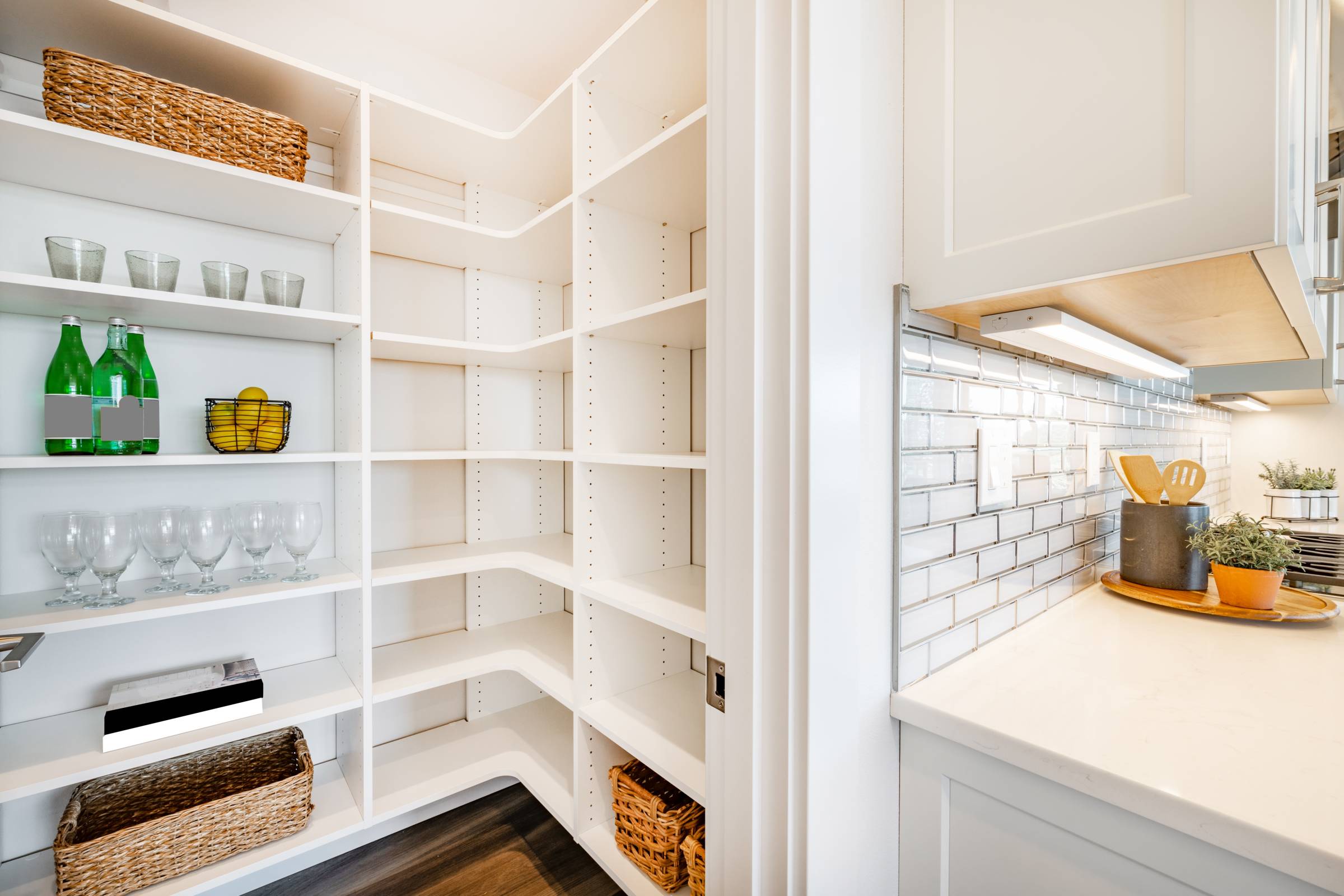
Both pantries require regular cleaning and maintenance to keep them functional and tidy. The specific maintenance requirements depend on each pantry’s features, materials, and appliances. Proper cleaning, organisation, and pest prevention practices will help ensure the longevity and usability of both a butler’s pantry and a walk-in pantry.
-
Butler’s pantry:
Cleaning: As an extension of the kitchen, a butler’s pantry might require similar cleaning and maintenance as the main kitchen area. This includes regularly wiping countertops from food prep spills, cleaning appliances, and maintaining the sink and other fixtures.
Cabinet care: The cabinets in a butler’s pantry need periodic cleaning and maintenance to ensure they stay in good condition. This involves wiping down surfaces, addressing spills or stains promptly, and occasionally treating the cabinets with appropriate cleaning products.
Appliance maintenance: If the butler’s pantry includes appliances like a second sink, dishwasher, or wine cooler, regular maintenance and cleaning will be necessary to keep them in optimal working condition.
-
Walk-in pantry:
Cleaning: A walk-in pantry may require regular cleaning of shelves, cabinets, and storage surfaces to keep them free from dust, spills, and food debris. It’s essential to clean up spills promptly to prevent stains or attract pests.
Organisation and inventory: Maintaining an organised walk-in pantry involves periodically reviewing and organising stored items. Regularly check expiration dates, rotate food items, and declutter as needed to ensure a clean and efficient storage space.
Pest prevention: Due to the increased storage capacity and variety of items, walk-in pantries can be more susceptible to pests. Preventive measures such as properly sealing food with airtight containers and keeping the pantry free from crumbs can help deter pests.
In terms of eco-friendliness
If a butler’s pantry includes appliances like refrigerators or dishwashers, their energy efficiency ratings will impact the pantry’s overall eco-friendliness. Choosing energy-efficient appliances can minimise environmental impact. The choice of materials for the cabinetry, countertops, and flooring in a butler’s pantry can also help.
Opting for reclaimed wood, bamboo, or recycled materials is ideal. If the pantry includes a sink and other plumbing fixtures, low-flow faucets or dual-flush toilets can enhance eco-friendliness.
Meanwhile, a walk-in pantry’s eco-friendliness largely depends on how well it is utilised. Efficient organisation and inventory management can reduce food waste by preventing items from expiring or spoiling. This pantry provides ample space to store groceries, including bulk items.
Choosing products with minimal or eco-friendly packaging can contribute to reducing waste. Implementing energy-efficient lighting solutions, such as LED bulbs, and ensuring proper ventilation can reduce power consumption and enhance sustainability.
Remodel your kitchen pantry with Airtasker
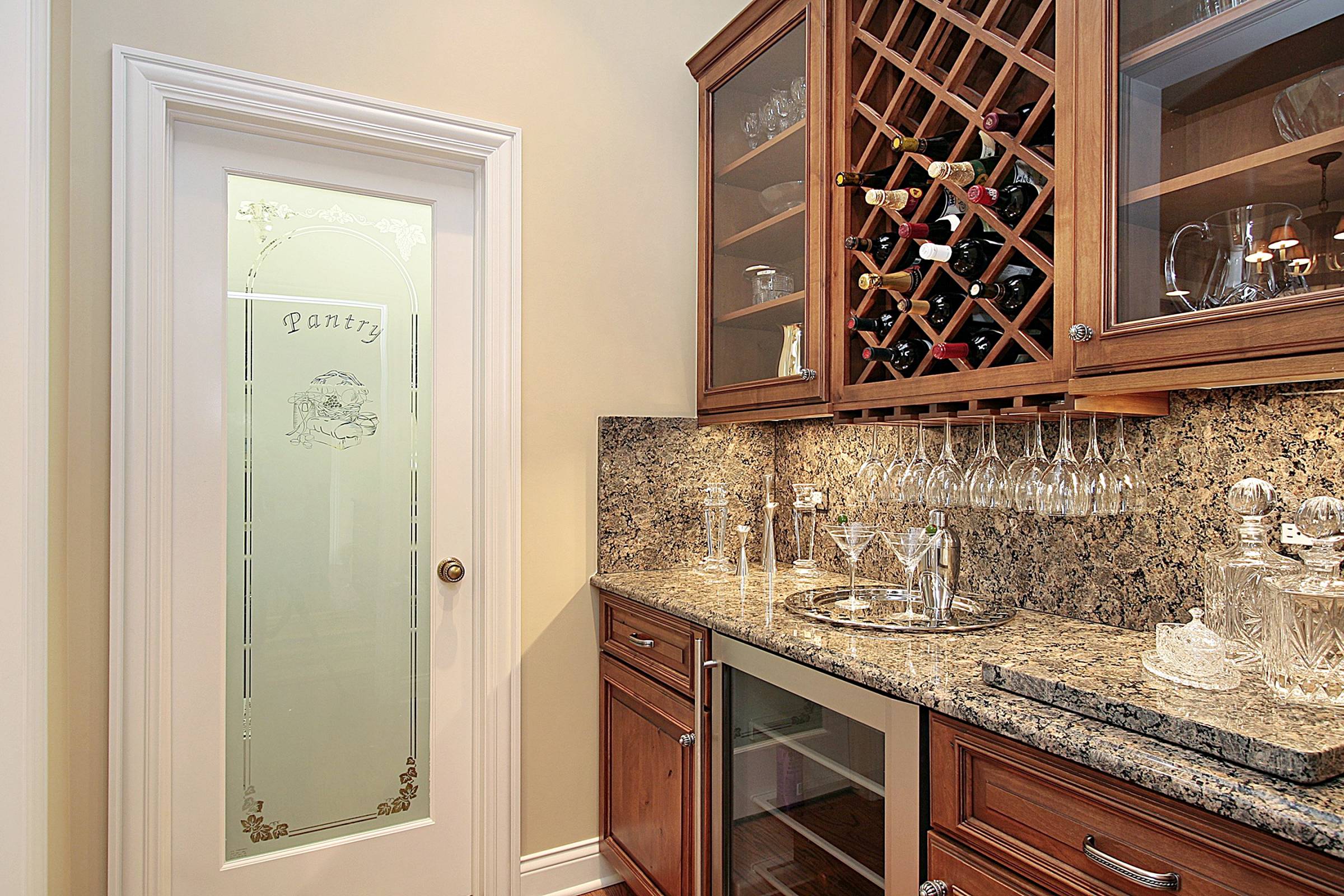
If you’re tired of the clutter in your kitchen pantry, it might be time to renovate or transform it into a beautifully functional space. Say goodbye to the days of rummaging through shelves and struggling to find what you need. Airtasker is here to help you find the right people to remodel and design your kitchen pantry quickly and efficiently.
With Airtasker, you can connect with skilled professionals who can help bring your butler’s pantry and walk-in pantry ideas to reality. Whether installing custom shelving, maximising storage space, or creating a more streamlined and organised layout, Airtasker can help you achieve a better kitchen.
If you’re still on the fence between butler’s and walk-in pantries, feel free to revisit the table below and post a task when you’re ready.
Butler's pantry vs walk-in pantry
|
Butler's Pantry |
Walk-in Pantry |
|
|---|---|---|
| Cost | Low: $1,000 to $1,400 Mid to high: $2,000 to $10,000 |
Low: $1,000 to $1,400 Mid to high: $5,000 to $10,000 |
| Appearance | A stylish room or space that complements the design of the kitchen and dining area |
Is usually a plain-looking storage space with the size of a small closet or an entire room |
| Versatility | Focuses on providing extra counter space for food preparation |
Focuses on maximising storage capacity |
| Maintenance | May require more effort in cleaning due to its additional countertops |
Regular shelf cleaning is necessary to deter pests. |
| Eco-friendliness | Can have power-saving appliances and water-saving plumbing fixtures |
Simply requires proper ventilation and efficient lighting solutions |
FAQs on butler's and walk-in pantries
As with any additional appliance, installing a sink in your butler’s pantry is optional. Though this might be an enticing addition, it all depends on your preferences and how you plan to utilise your butler's pantry. Ask your Tasker for recommendations before your start renovating.
by zones can help you save time during meal prep and keep your pantry looking neat. To get started, identify the different categories of food and cooking supplies that you use most often. You might have zones for weeknight dinners, packed lunches, baking supplies, snacks, and so on. Make sure to place the frequently used items in easy-to-reach locations.
Find kitchen renovators, fast
Post a task
Related articles
Related price guides
